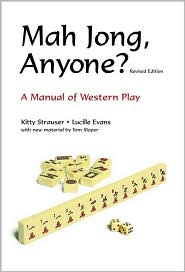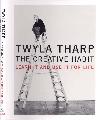Read
 Point Omega: A Novel (2010)
by Don DeLillo.
Point Omega: A Novel (2010)
by Don DeLillo.
A meditation on mysteries of transience, emptiness, need, and loss.
French Jesuit Pierre Teilhard de Chardin
invented the term "Omega Point"
to denote
"a maximum level of complexity and consciousness towards which the universe appears to be evolving"
and which
"is also the actual cause for the universe to grow in complexity and consciousness"
(ref. wikipedia).
The novel indicates that the brainy reaching for the Omega Point falls apart and seems to reverse
into a physical collapse when a great personal loss occurs.
In effect, it seems to deny the existence of the Omega Point.
Later I saw that The New Yorker (March 1, 2010) has
an unattributed and unenthusiastic Briefly Noted one-paragraph review (p. 75):
"thin novel ... most[ly] ... resistant to the reader's focused attention —
it reaches for enigmatic profundity but meanders".
Though I find an
apt quote (p. 82) in Anthony Lane's review the Scorsese movie of Shutter Island,
in a quote of Umberto Eco who,
"In a celebrated riff on Casablanca ... wrote,
'Two clichés make us laugh but a hundred clichés move us,
because we dimly sense that the clichés are talking among themselves."
There are a lot of clichés in the novel — the intellectual sucked into war planning,
people that don't appreciate what someone states is art, people that do appreciate it,
fantasies pursued, obsession with a person, obsession with a project, parental control,
parental responsibility, the use of the desert as a place of clarity, ditto as a place of loss, dot-dot-dot.
I like this richness and their interconnections.
Also when the war intellectual Richard Estler describes his work, he references
haiku [p. 29]:
|
"Haiku means nothing beyond what it actually is.
A pond in summer, a leaf in the wind.
It's human consciousness located in nature.
It's the answer to everything in a set number of lines,
a prescribed syllable count.
I wanted a haiku war," he said.
"I wanted a war in three lines.
This was not a matter of force levels or logistics.
What I wanted was a set of ideas linked to transient things.
That is the soul of haiku.
Bare everything to plain sight.
See what's there.
Things in war are transient.
See what's there and then be prepared to watch it disappear.
...
That's what I was there for, to give them words and meaning.
Words they hadn't used, new ways of thinking and seeing."
|
But finally, after Estler's daughter disappears, perhaps in the company of a psycho-killer and
perhaps not [p. 98]:
|
The omega point has narrowed, here and now, to the point of a knife as it enters a body.
All the man's grand themes funneled down to local grief, one body, out there somewhere, or not.
|
I prefer DeLillo's shorter books, his novella like this one and his even better
The Body Artist:

Other books by DeLillo:
-
Cosmopolis: a surreal farce of sociopathic greed.
-
Falling Man: his "9/11" novel.
-
Point Omega (2010).
-
The Body Artist: a slender story about how one artist
creates her work from her passions and her losses, from the aggregation of her experiences and her memories.
And how she integrates and communicates them through her medium, which is, for the novel's heroine, her body.
-
Underworld: his weakest book that I've read;
the book's mass is like that of a small moon of Jupiter; the tome is merely a collage of information,
which the diverse and intermittent narrative fails to hold together.
DeLillo writes (a third of the way through the book): "Pain is just another form of information".
And in this novel, vice versa.
 Links.
Links.
 Booker Prizes
Booker Prizes
 Chocolate.
Chocolate.
 Books read
Books read
 Best books read in 2009.
Best books read in 2009.
 Best writers of poetry and prose
Best writers of poetry and prose
 Harry Potter;
also
Harry Potter en Español.
Harry Potter;
also
Harry Potter en Español.
 New books on Christianity and Spirituality
New books on Christianity and Spirituality


 Why read a book?
Why read a book?
 The Mental Health of George W. Bush
The Mental Health of George W. Bush



